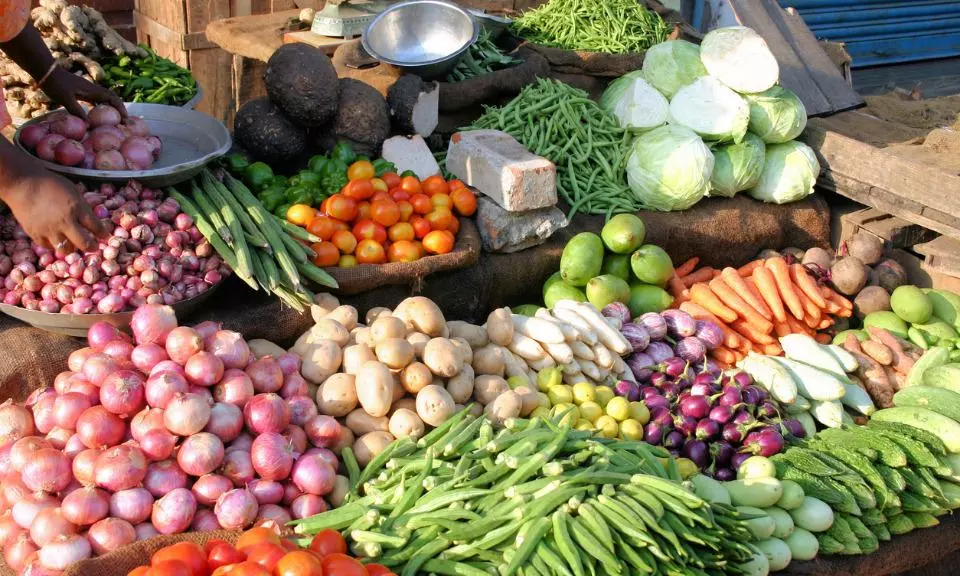
Food prices plunge, driving inflation to a four-month low
Vegetables saw a considerable price reversal, dropping 7.4 per cent month-on-month as supply improved after spikes in September and October

India’s retail inflation based on the Consumer Price Index (CPI) for December moderated to 5.22 per cent year-on-year, marking its lowest level in four months, stated the Ministry of Statistics and Programme Implementation on Monday (January 13).
The decline was primarily driven by a sharp drop in food prices, which fell 1.5 per cent month-on-month. Key contributors to the easing included lower prices for vegetables, fruits, meat, and pulses. Core inflation, which excludes volatile food and fuel prices, also dipped slightly to 3.7 per cent, supported by a reduction in gold and silver prices. The inflation was at 5.48 per cent in November.
Also read: India's GDP growth projected to slow down at 6.4%, lowest in four years
Food prices
According to a note from Emkay Research, food prices were the most significant factor behind the overall decline in inflation. Vegetables saw a considerable price reversal, dropping 7.4 per cent month-on-month as supply improved after spikes in September and October. Other food items, including pulses (-1 per cent), fruits (-0.9 per cent), and meat and fish (-0.7 per cent), also contributed to the easing trend. However, not all food categories followed this pattern. Prices for oils and fats rose sharply by 1.1 per cent, driven by higher global prices and increased import duties, while egg prices spiked by 5.3% due to strong demand and rising poultry feed costs.
Core inflation
Core inflation, a key measure of underlying price pressures, dropped slightly to 3.7 per cent. On a monthly basis, core inflation registered its first decline since September 2023, highlighting weak domestic demand. A notable driver of this drop was a decrease in personal care costs, particularly gold and silver prices. Core inflation is expected to stabilise around 3.7-3.8 per cent despite the easing in the coming months.
Outlook for 2025
January inflation is tracking around 4.9-5 per cent, with continued easing in food prices, especially for fruits, vegetables, cereals, and pulses. Lower global edible oil prices are also expected to contribute to this trend. For the full fiscal year 2025, headline inflation is projected to average 4.9 per cent, while core inflation is estimated to remain below 4 per cent, reflecting controlled price pressures in the broader economy.
Meanwhile, India’s industrial production showed encouraging signs in November, with a growth rate of 5.2 per cent year-on-year, compared to 3.7 per cent in October. The improvement was broad-based, driven by more substantial manufacturing, electricity, and mining performance. Consumer goods, both durable and non-durable, also benefited from festive season demand.
Also read: Retail inflation eases to 5.48 pc in November as veggies get cheaper
Challenges ahead
The Emkay Research note said the Reserve Bank of India (RBI) faces a complex balancing act as it considers its next steps on interest rates. While easing inflation allows for potential rate cuts, global uncertainties, foreign exchange pressures, and intervention costs in currency markets complicate the decision. A rate cut in February 2025 remains possible, but policymakers will likely tread cautiously, especially with a new RBI governor and Monetary Policy Committee in place.
To support economic recovery, the RBI may also explore unconventional measures, such as relaxing lending norms, to boost credit growth, which has been slowing in recent months. The coming weeks will be critical in shaping the central bank’s approach to managing inflation, development, and external challenges.

